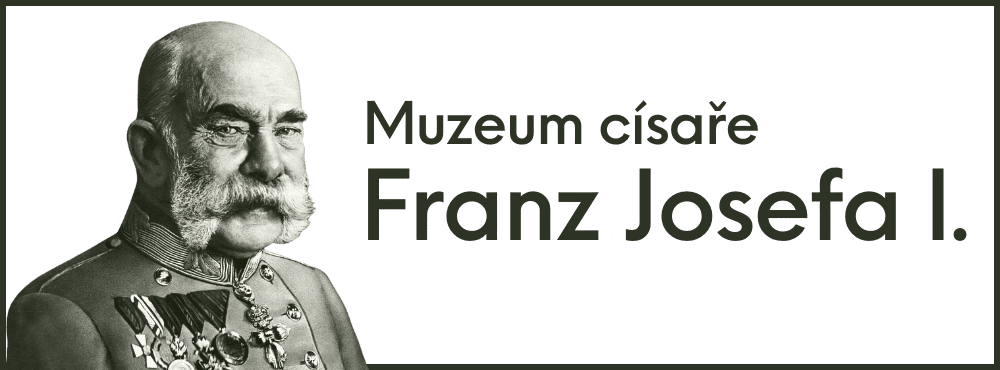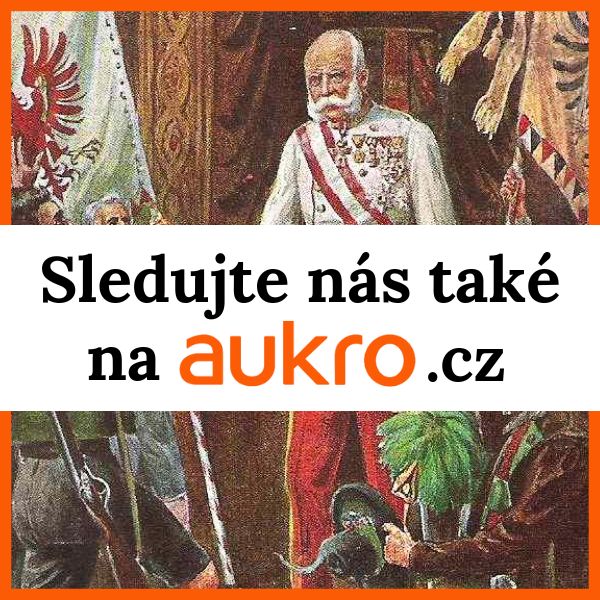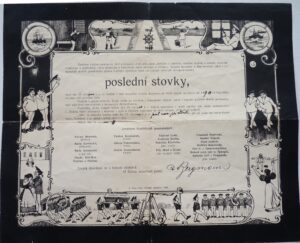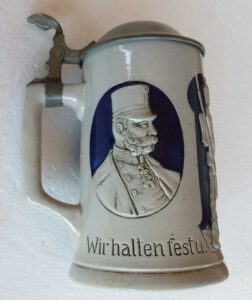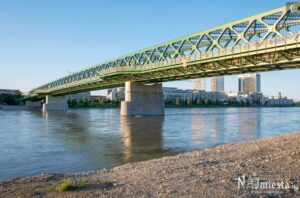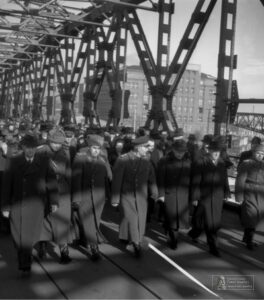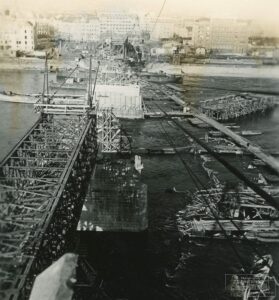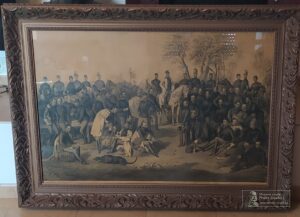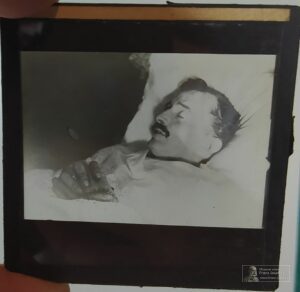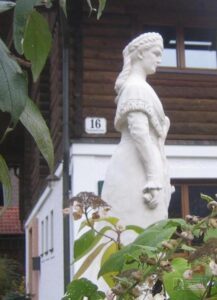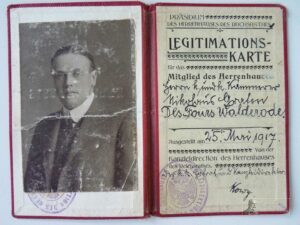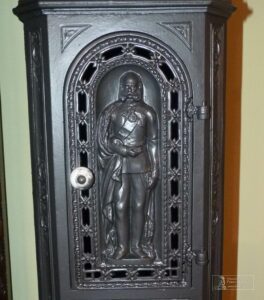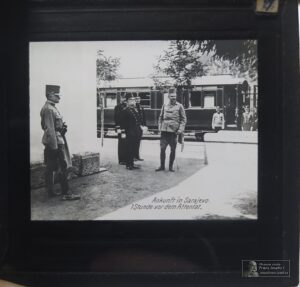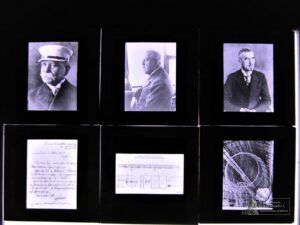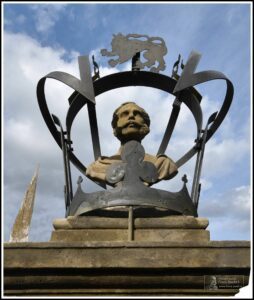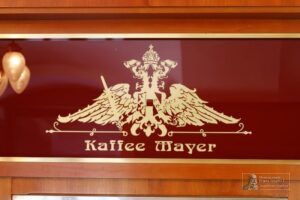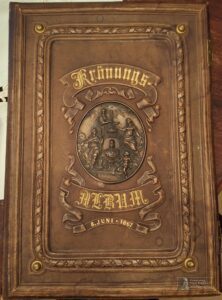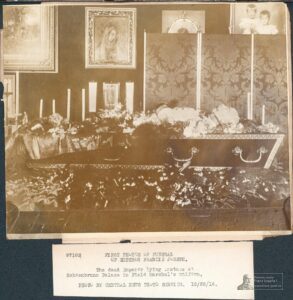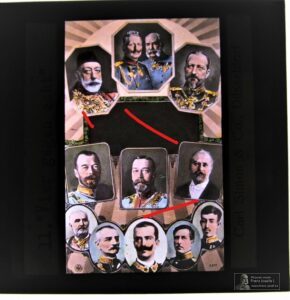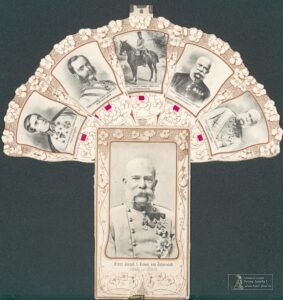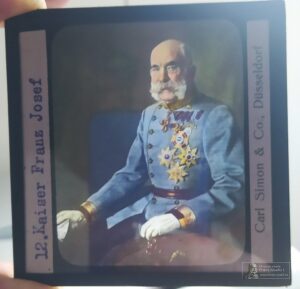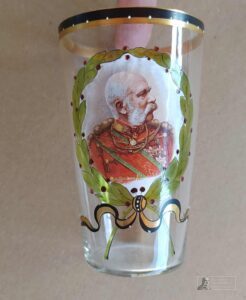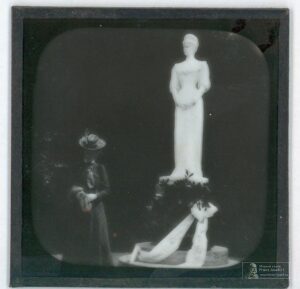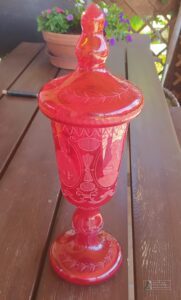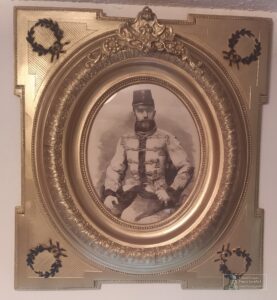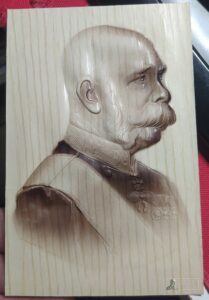 New" Old Bridge over the Danube in Bratislava
New" Old Bridge over the Danube in Bratislava
text Miroslav Maťaščík | graphic bases archive of the author, Jaroslav Baron
▼ The František Jozef Bridge, respectively the M.R. Štefánik Bridge – year 1890–1945
▲ „New" Old Bridge in Bratislava
Construction magazine 03/16 -2016
Ing. Miroslav Maťaščík


He is a designer at M.M. s.r.o. Bratislava, where he designs bridges. The most important projects include, for example, the Apollo Bridge over the Danube in Bratislava, the Marie Valerie Bridge over the Danube in Šturov, the Privoz overpass in Bratislava, the Pusty hrad overpass, the bridge over
the river Sučanka, the Motocross overpass, the city overpass in Považská Bystrica or the Old Bridge over the Danube in Bratislava.
E-mail: matascik.miroslav@gmail.com
The bridge had been in service for 55 years when it was blown up on the night of April 2-3, 1945 by retreating German troops. The steel road bridge was restored using the typical Roth-Waagner bridge system. The reconstruction of the bridge began on August 4, 1945 and was completed on January 24, 1946, i.e. in five months and seventeen days. The bridge was named the Red Army Bridge. In 1950, the railway bridge with a rhombic system on common pillars was also restored. Together with the road bridge, they formed the only permanent bridge over the Danube in Bratislava until 1972.
The road bridge currently (after reconstruction in 1986) has the first two bays simply supported, the next three bays form a continuous girder and the last two bays form the opposite of a continuous girder. The railway bridge consists of a system of seven simply supported girders. In 1989, the bridge was given the name Stary most, and it is still called that today.
A brief history of the Old Bridge project
In 2007, the association of companies Alfa 04, Reming Consult and PIO Keramoprojekt became the winner of the international competition for the construction project of the Nosny public transport system in Bratislava. The dominant object of this building was the reconstruction of the Old Bridge over the Danube. The time schedule of the projects and construction works assumed the beginning of construction in 2009 and their completion in 2011. And since the investor of the construction - mainly the city of SR Bratislava - had reserved financial resources for this construction, the schedule was realistic.
Alfa 04, as a leading member of the association and designer of the Old Bridge, presented six variants of the bridge solution in a very short time. All proposed solutions took into account the basic urban-architectural limitations of the space in which the bridge is installed, namely the neighborhood of attractively shaped bridges - on one side the suspended SNP Bridge, on the other side the arched Apollo Bridge. Both of these bridges have height-dominant main load-bearing elements - the SNP pylon bridge and the Apollo arch bridge. Another height-dominant structural element in this space would therefore be inappropriate. Also, in the context of all Bratislava bridges, it was desirable to achieve a harmonious alternation of the shape typology of these bridges, namely the alternation of bridges with a dominant height - Most SNP and Most Apollo, with bridges with a low structural solution - Most Lafranconi, Stary most and Pristavny most. Another limitation when choosing a structural solution was the fact that there was only about a three-meter gap between the navigable gauge and the level of the bridge in a critical place, and it is not possible to place a load-bearing structure in such a space for a span of more than 150 meters. The main supporting element of the main field had to be placed above the road. The width arrangement on the bridge was also a fundamental limitation in the creation of the design solution. The investor demanded that there should be two road lanes on the bridge in addition to the double-track tram line. Apparently, after moving the tram line to the tunnel under the Danube, the tram tracks were to be changed to other road lanes. The spans of the bridge spans were fundamentally influenced by the requirement of the Slovak Water Management Company that the design of the bridge take into account a regular navigation gauge with a width of 100 m (the existing bridge had a span of the longest span of only 95 m).
Despite all the mentioned limitations, it was also necessary to take into account in the bridge designs the requirement of the Monuments Office of the Slovak Republic that the lower structure of the flooded Old Bridge be preserved to the maximum extent possible (it was not possible to preserve the flood-bearing structure of the Old Bridge due to its technical condition and the required parameters of the new bridge). .
The mentioned facts significantly limited the use of standard construction solutions and required the development of two non-standard construction systems.
However, all proposed solutions took into account the following technical boundary conditions.
■ The field spacing will be 50.40 + 67.20 + 75.60 + 151.20 + 75.60 + 50.40 = 470.40 m.
This will be achieved by removing two existing supports in the Danube (they are in poor technical condition) and building one new support.
■ The bridge's width of 34.90 m will enable the placement of a double-track tram, two road lanes and pedestrian and cyclist lanes 2 × 5.00 m wide. tunnel). In addition, this wide arrangement will make it possible to react to the development of the traffic situation in the longer term, i.e. to widen the road lanes by one at the expense of rest zones (in case the tram remains on the bridge).
■ The construction system must take into account the requirement for increased navigation gauge and the guidance of the level on the bridge, which limits the longitudinal slope in the section between Šafarikov Square and the critical corner of the navigation gauge. These circumstances limited the construction height below the road level to about 3.00 m. Since this height is not sufficient to bridge the main span, part of the main load-bearing elements had to be pushed above the road level. ■ Keďže spodnu stavbu tvoria podpery sčasti povodne alebo nove, vzhľadom na parametre plavebneho gabaritu treba aj pri povodnych podperach zosilniť zakladanie a zvačšiť ich vyšku až o približne 3 m.
The extension of the supports will form the interface between the flood mass of the supports (wall with granite cladding) and the new part of the support. It will be an interface recognized by the geometric shape, materials and surface treatment of the old and the new. In the case of new supports, this principle will be followed by the use of flood granite material from the removed flood supports of the lower part. The shape of the superstructure took into account static and technological requirements (e.g. extension of the supporting structure). The first stage of the work was accompanied by great pressure from both the investor and the architects for the new bridge to be a replica of the František Jozef Bridge a hundred years ago. However, the described requirements for traffic space would require three levels of truss girders in this variant, which would no longer be possible to place on the existing supports, which would require a completely new lower construction of the bridge.
The three levels of beams would also limit the variability of the use of traffic space in the future. The bridge would have a lot of laborious details and, moreover, it would be very difficult to assemble without excluding navigation on the Danube. Considering this, the construction costs of this variant would be the highest among the studied variants. Even the shape of the bridge would have its weaknesses - the slanted view through three trusses creates a disharmonious tangle of elements. And so it was confirmed that you don't step into the same river twice and that forceful copying of the flood shape without logical structural or static drainage is not the right way to a good work.
The other three studied variants with pylons of different shapes have the same concept. The bridge part consists of a massive chamber with a parapet, on both sides there are massive consoles with a steel bridge. Mostovka's part is suspended on pylons of various shapes by means of three massive cables. From a purely Mostar point of view, these suspended variants are the best (the author preferred the variant with the V pylon). Despite its width, the Mostovka part looks nimble, the suspension system looks strong and logical. The supporting structure could be conveniently assembled. Considering this, the listed variants would probably be the most economical.
The last two variants consisted of a system with a height-variable rib as the main bending element and a massive torsion-resistant chamber. The wide bridge deck is supported by ribs wrapped in a steel, sometimes perforated shell. The openings in the deck shell would be illuminated and would create interesting lighting effects in the evening. For the mentioned system, two variants with different methods of optical and material lightening of the rib were proposed - the graphite variant and the perforated rib variant. In both variants, the load-bearing rib is located in the axis of the bridge, which would create a luxurious traffic space on the roadway, which could be modified in various ways in the future. In the graphite variant, the bearing rib is fully and optically lightened with abstract graphics. With the perforated rib variant, the weight of this supporting element is lightened by elliptical holes. The ellipse motif is then repeated in the view of the bridge.
Due to the fact that there was no agreement between the designer and the investor (the mayor and the architects were promoting a replica of the flood bridge) about the final solution of the bridge, the City Council decided to solve this problem with a popular plebiscite (voting via SMS). As is generally known, the perforated rib variant won the vote. The winning variant is an original construction system that took into account the non-standard requirements for the traffic function of the bridge, as well as the described spatial (size, level) and urban (neighboring bridges) restrictions.
The designer assumed that the supporting structure of the bridge would be assembled on the right bank of the Danube and from there it would be extended to its final position above the river. This procedure would not disturb the standard mode of navigation on the Danube.
The vote of the citizens of Bratislava put a definitive end to the disputes about the definitive variant of the bridge, and the designers began working on the bridge project at a hectic pace. However, in August 2008, when the project work was at a high stage of development, eight months before the planned start of construction work, the mayor of Bratislava, under pressure from the Slovak Chamber of Architects, stopped the project work with the fact that an architectural competition would be held for the restoration project of the Old Bridge. However, this announced architectural competition has not yet been announced.
„,,Old" Old bridge
At the beginning of 2009, the city of the Slovak Republic, Bratislava, in particular, cautiously revived the intention to prepare a project for the reconstruction of the Old Bridge in the mode of public tender. In the meantime, however, the financial coverage of the construction was dispersed for other purposes, and the world economic crisis also arrived in the capital of Slovakia. Taking into account the changed economic situation of the capital, the reduction
demands on the utility parameters of the bridge (bridge only for tram transport) and on the lifespan of the bridge, we started looking for a new technically acceptable solution for the Old Bridge. We proposed that the flood pillars of the bridge be left and that the dam girders of the railway part of the flooded Old Bridge be used. For the new concept, it was decisive to find agreement with the water management and navigation authorities on the Danube, who demanded a regular navigation gauge under the bridge. In the end, it was possible to agree with these institutions that the current pillars and thus the current gauge width will be preserved, but the height of the gauge will be increased to the required 10.00 m. Based on these new boundary conditions, the following bridge reconstruction concept was proposed.
■ The road part of the Old Bridge would be removed, as the state of corrosion, the fracture toughness parameters and the remaining fatigue life of its steel structure did not provide prerequisites for further safe operation of the bridge.
■ The steel structure of the railway part of the bridge had better parameters of corrosion loss and fatigue life. Its four fields, which are above the Danube, would be moved to the bank with the help of sulodi. There, the dam girders would be separated from the bridge deck, the structure would be repaired to the necessary extent and provided with new paint. Next, the main beams would be moved to the required distance, they would be connected to the new bridge deck, and such an old-new structure would be brought to sleep on the already elevated pillars.
■ The short 35 m long outer fields would be completely restored, as their dam beams would not have the required load capacity after the expansion of the bridge section.
■ The cardinal problem of such reconstruction of the bridge was solving the insufficient fracture toughness of the steel of the flood girders. This unsatisfactory steel parameter could be problematic in case of a strong impact to these beams. Such a situation could occur in the event of the vehicle swerving and its contact with the beam. For the aforementioned reason, the main emphasis in the design of the bridge's structural solution was primarily to prevent such a load case. The bridge part of the bridge was to be a new structure, which was to be placed by means of elastomer bearings on the cross members of the main supporting structure. Such a "floating" bridge deck would dampen the main supporting structure in the event of a sudden swerve. The Mostovka part of the bridge would have a steel parapet and steel guardrails with a high level of retention on both sides of the roadway. These measures would prevent the vehicle from coming into contact with the main beams of the structure in the event of a rollover.
However, this concept had one more weakness. The steel samples taken showed cracks in about 20% of the rivet holes, as well as hidden corrosion between the individual layers of sheets. It was not possible to take samples from the load-bearing parts of the structure, however, non-destructive diagnostic methods cannot detect these faults. Therefore, the project also considered the scenario that if, after dismantling the beams on the shore, it is found that they are in an unsatisfactory condition, they will be made of new steel.
For the described concept of the reconstruction of the Old Bridge, which we called the "Old" Old Bridge, the documentation for the territorial decision and the documentation for the building permit have already been prepared. A valid territorial decision and building permit were issued for it. The only thing missing from this project was money for its implementation.
„New" Old Bridge
However, a small miracle happened in October 2011. An agreement was reached between the Ministry of Transport and the capital that the city will become an eligible applicant for a non-refundable financial contribution from the cohesion fund of the European Union. Since one of the criteria for drawing funds from the aforementioned fund is the integration of rail transport with urban public transport, the tram line, as the main transport medium of the public transport system, was supplemented by a so-called tram-train with a standard track gauge of 1435 mm.
However, the mentioned new circumstances raised new questions about the already approved concept of the Old Bridge. The increased load from the tram-train meant that the steel of the flood structure of the Old Bridge would make up only about 30% of the total weight of the steel of the reconstructed bridge, and at the same time, the limited life of the flood steel would devalue the new steel structure as well.
The flood emergency scenario, which assumed that in the event of an inadequate technical condition of the flooded steel structure (cracks, hidden corrosion, etc.), the dam girders would be made of new steel, would have much more adverse effects. The rules for drawing finance from the EU Cohesion Fund do not allow changing the project after its approval. The following catastrophic scenario actually threatened: after the construction was washed ashore, it was discovered that the flood steel was inadequate. The EU does not agree with the change and the city does not have money in the budget for a new construction. The work is at a standstill, and the exhausted bridge contractor is penalizing the city, because he cannot continue the work for a reason that is not his fault.
For the above reasons, the bridge designer came up with a proposal to change the concept of the Old Bridge so that its supporting structure was completely new. Such a solution would make it possible to meet all the requirements for the utility parameters of the bridge - in addition to the existing ones, there are also requirements for generous promenade sidewalks for pedestrians and cyclists, as well as viewing terraces near the pillars in the Danube. It would also make it possible to comply with the requirement for a regular navigation gauge under the bridge. The construction investor reacted cautiously to the proposal, he was afraid of a new construction procedure, but he was even more afraid of the careful activation of architects, which could upset the already tense schedule of project preparation and application to Brussels (it turned out that the investor's fears were justified).
However, as a bridge designer, I was convinced that it would be a big mistake to miss this historic chance for the Stary most and Bratislava. Therefore, I developed three new variants of the bridge concept - modified variants of the perforated rib, extra-dorsed and a completely new variant of the rhombic system. I presented these new solutions to the mayor of the main place. The mayor quickly understood the risks associated with proceeding according to the flood concept, welcomed the mentioned initiative and, after consultation with the chief architect, recommended a variant of the rhombic system. Since this variant best preserved the genius loci of the area, which was dominated by the flooded Old Bridge for many years, I also accepted the mayor's recommendation.
But then something started that I don't like to mention.
In the following weeks, I was subjected to the torture of new negotiations with the chief architect of the city and the architects invited by her, a new geyser of attacks, starting with imitations of the flooded František Jozef Bridge with imitation of rivets on the welded structure, continuing with a "green" bridge with vines climbing the dam structure and ending with a public space with large areas of greenery in a cubist shape, eccentrically suspended on a moderately shaped flood dam construction.
Of course, if the main city wanted to have an exclusive green pedestrian zone on the bridge in the style of Abu Dhabi, and defined it already in the assignment, the designer would adapt the overall construction concept of the bridge to it. However, it would be architectural barbarism to "glue" an additional extravagant public space to a moderately shaped, conservative construction.
Fortunately, the strict conditions for drawing EU funds (these funds can only be used for so-called authorized costs, i.e. for a bridge for rail traffic) prevented Bratislava from being "ruined" by a Disneyland-style bridge work for a hundred years. So once in Bratislava, reason and money of the European Union won. And so, at its meeting on March 29, 2012, the city council approved the new concept of the Old Bridge, and the designer drew up all the necessary documentation in record time.
What does the "new" Old Bridge look like?
This bridge has a significantly larger span of the main span than the flood bridge, is significantly wider, has generous sidewalks, is continuous and welded.
It is a modern bridge in every way. It is different from the flooded Old Bridge. I assume, however, that by using a shape-conservative straight-belt steel truss system, especially when viewed from the embankment, a feeling will be created that there is a "younger brother" of the Old Bridge over the Danube. And the use of some elements of the flood rhombic system will enhance this feeling even more. This design system, which is deliberately conservative in shape, also fits seamlessly between the neighboring more extravagantly shaped bridges - Most SNP and Most Apollo. The construction system of this bridge is unique, it has not yet been used anywhere else. Its construction was a difficult task.
Das Systemmodul musste an unterschiedliche Spannweiten des Feldes angepasst werden (die meisten Hochwasserstützen bleiben erhalten) und seine Geometrie musste die Absicht des Planers berücksichtigen, so dass ein Teil der Struktur eine rein geometrische Form (eine Raute) aufweist ) über die Geländerlinie hinausragt. Die größere Anzahl an Kontakten wird durch die einfachen Formen der Querschnitte der Elemente kompensiert. Die konsequente Verwendung eines Querschnittstyps (H-Profil) für die meisten Elemente der Stahlkonstruktion vereinfacht deren Herstellung und schafft eine Atmosphäre der Ordnung und Solidität der Struktur.
The basic shortcoming of this bridge concept, namely the missing road lanes (caused by the city's financial limits), the proposal solves by creating a corridor for the future road bridge next to the bridge. Despite the original static solution, the old bridge in the described form will appear to the lay public as a Mostar classic. Steel dam bridges were built, are being built and will be built. If you don't believe, take a boat ride on the Danube and look at Budapest or Tulln near Vienna, where they recently replaced flooded steel riveted bridges with new welded dam bridges. The proposed concept meets the nostalgic relationship of the city's citizens to the flood
Old bridge. I understand the presented concept as a welcoming step towards the taste of the majority (however, who can determine it objectively?) and it brought peace to the already long history of this bridge project.
The resulting concept has the following
basic parameters
■ The bridge spans were adjusted to meet the requirement for regular navigation gauge dimensions of 100 × 10 m. This was achieved by removing flood supports 3 and 4 (they are in the worst technical condition), which were replaced by a new support 34.
■ The field spacing is 32.24 + 106.68 + 137.16 + 75.60 + 75.92 + 32.24 m, the total length of the bridge is 465.00 m.
■ The supporting structure of the bridge consists of two continuous steel trusses. The cross members of the bridge under the roadway and the sidewalk part are also made of steel trusses. The bridge deck of the road section consists of a bonded steel-concrete slab with steel longitudinals under the rails.
■ The bridge will have generous 5.50 m wide sidewalks (pedestrians and cyclists) on both sides, a viewing terrace with benches and greenery above the supports in the stream.
▼ The stage of extending the bridge with the tower on the pontoon
▲ Extreme console during bridge extension
■ For the construction of the new pillar 34, granite blocks from the flooded pillars 3 and 4 will be used, which will ensure the visual uniformity of the surfaces of all the pillars.
Conclusion
In a few weeks, the construction of the Old Bridge will be handed over for use. Today, however, a new work rises above the Danube, which has become part of the panorama of the capital city of Slovakia. I believe that the people of Bratislava will accept this bridge "as their own", that it will contribute to the improvement of the city's traffic situation and that its generous pedestrian zones will become a popular promenade for the residents of Bratislava. ■
Basic data about the building
Building name: Public transport system in Bratislava
Investor: Bratislava, the capital of SR
Projektant realizačnej dokumentácie:
Zdruzenie Alfa 04 a.s. – SHP Brno, s.r.o.
Author of the architectural solutions of the Old Bridge:
Ing. Miroslav Maťaščik
Construction contractor: Public transport association - Stary most open
by the companies Eurovia SK, a.s., Eurovia
CS, a.s., a SMP CZ, a.s.
Construction time: 07/2013–12/2015
Construction costs – Old Bridge:
cca 2 mil. Eur
